Inside The New York Botanical Garden
conifers
Posted in Photography on February 16 2011, by Plant Talk
When the Garden photographer emails you to say that he really loves a photo he took, you just know it’s going to be good. And we agree. This is one pretty pine tree!
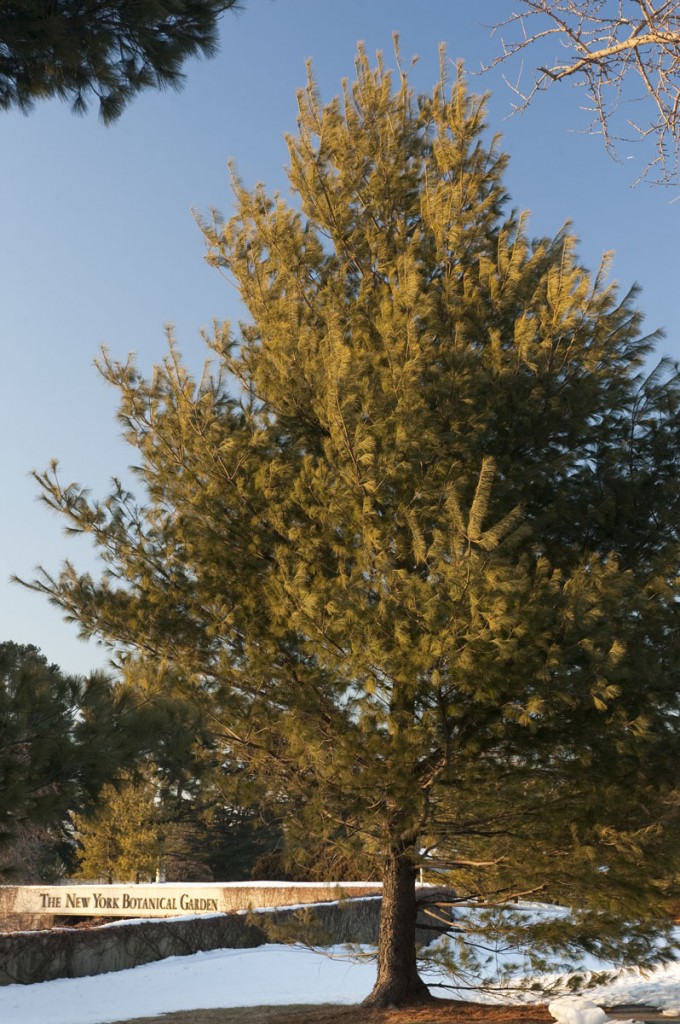
Pinus strobus, the eastern white pine in front of the Visitor Center (photo by Ivo M. Vermeulen)
Posted in Photography on January 8 2011, by Plant Talk
We just love this little conifer, Abies koreana ‘Aurea’, known more commonly as the golden Korean fir. And some of us here see a certain, wise, green character from Star Wars in its silhouette. Do you? Or do you maybe see something different?
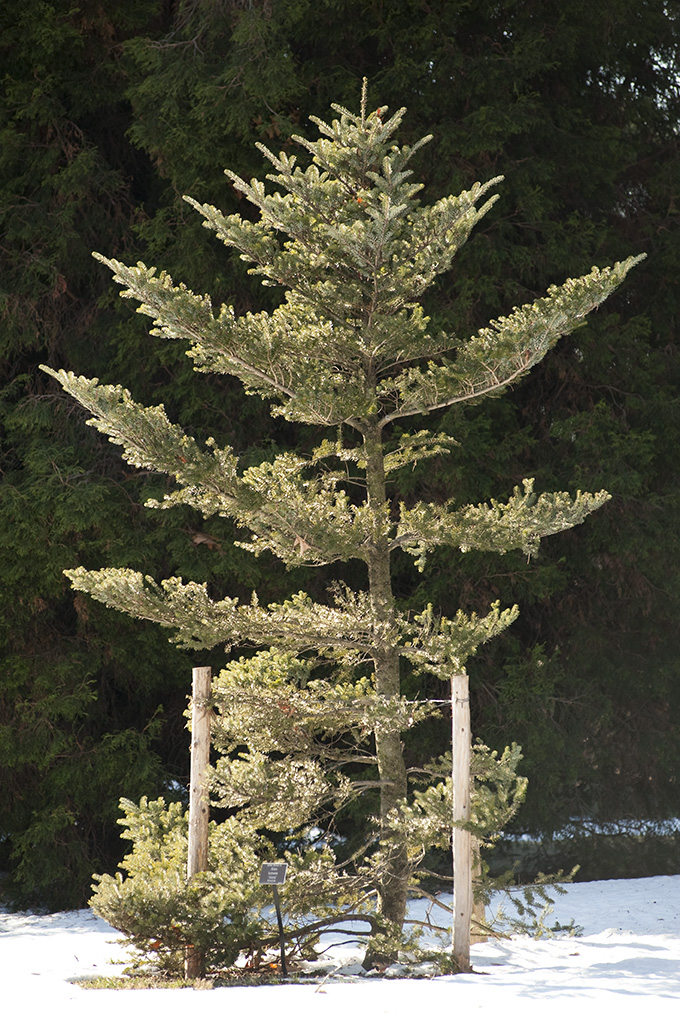
Golden Korean Fir (photo by Ivo M. Vermeulen)
Posted in Gardening Tips on January 4 2011, by Sonia Uyterhoeven
 |
Sonia Uyterhoeven is Gardener for Public Education. |
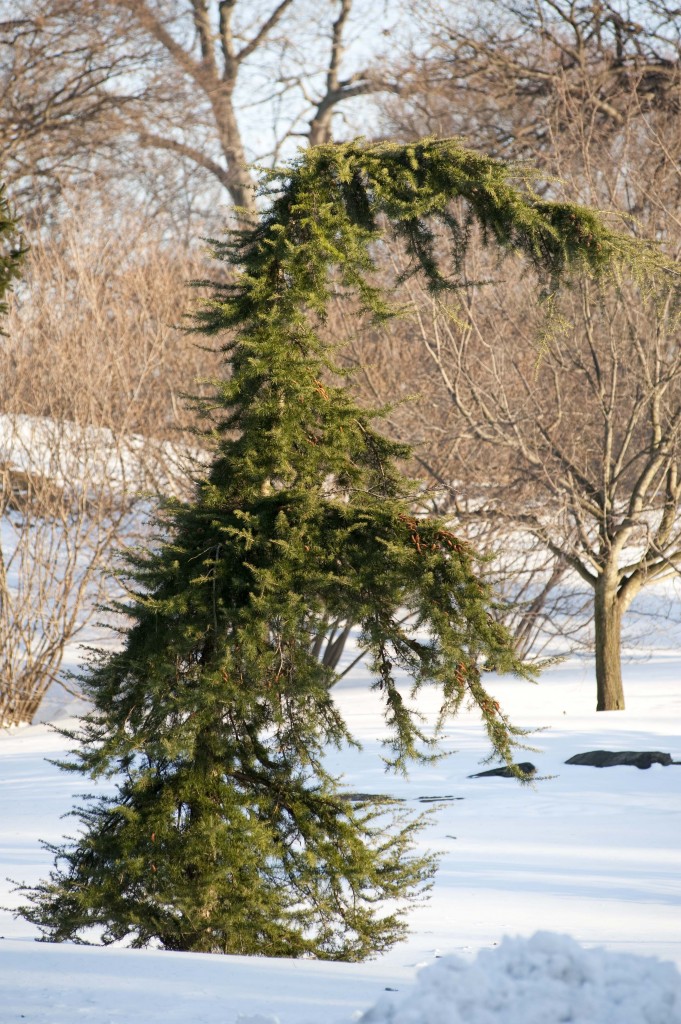 Last week we took a look at some of the more unusual conifers that grace the entrance of the Benenson Ornamental Conifer Collection at The New York Botanical Garden. This week, I am going to go for some homeowner appeal and discuss miniature and dwarf conifers.
Last week we took a look at some of the more unusual conifers that grace the entrance of the Benenson Ornamental Conifer Collection at The New York Botanical Garden. This week, I am going to go for some homeowner appeal and discuss miniature and dwarf conifers.
The American Conifer Society classifies conifers by growth rate: miniature conifers grow less than one inch per year, dwarf conifers grow 1-6 inches per year, intermediate conifers grow 6-12 inches per year and large conifers grow more than a foot per year.
Miniature and dwarf conifers are basically trees disguised as shrubs – they can snuggle up to your perennials in an unobtrusive way and are wonderful additions to your container gardens. You often see the botanical epithet ‘nana’ attached to cultivar names – it means dwarf.
In the perennial garden, dwarf conifers provide winter interest. They give a nice permanent structure to the plantings. Many of the conifers have a graceful, architectural structure that flows effortlessly and mingles gregariously in amongst the drifts of perennials.
Read More
Posted in Gardening Tips on December 27 2010, by Sonia Uyterhoeven
 |
Sonia Uyterhoeven is Gardener for Public Education. |
 The Benenson Ornamental Conifer Collection has over 400 specimens in a 15 acre area. While a few of the conifers such as the bald cypress (Taxodium distichum), dawn-redwood (Metasequoia glyptostroboides) and larches (Larix sp.) are deciduous most of them are evergreen making this part of the garden an ideal visiting spot during the winter months.
The Benenson Ornamental Conifer Collection has over 400 specimens in a 15 acre area. While a few of the conifers such as the bald cypress (Taxodium distichum), dawn-redwood (Metasequoia glyptostroboides) and larches (Larix sp.) are deciduous most of them are evergreen making this part of the garden an ideal visiting spot during the winter months.
Conifers bear their seeds in cones. Most of them have needle or scale-like leaves. This feature gives their leaves a low-surface area that helps them conserve water and allow them to thrive in difficult situations.
While our Ross Conifer Collection features species, the Benenson Ornamental Conifer collection offers examples of cultivated varieties. Some ornamental conifers are ubiquitous in the nursery trade and others are rare finds that are generally worth searching out. They often have interesting forms, textures and foliage. They offer the homeowner much needed winter interest, add to the architecture of your garden and are great additions to any landscape.
Let’s start with the entrance of this garden and look at a few of its residents. At the entrance off to the side are two young cedars. One is a cedar of Lebanon named ‘Beacon Hill’ (Cedrus libani ‘Beacon Hill’). This is a dwarf specimen that has bright green foliage and a lovely sprawling habit that gracefully contorts itself like a ballerina.
Adjacent is a Himalayan cedar named Cedrus deodara ‘Shalimar’. This cedar has blue-green needles and light and airy branches that stretch outward in a raised horizontal fashion, drooping slightly at the tip. The shape of the branches looks like angel’s wings taking off in flight.
Two Sargent’s weeping hemlock (Tsuga canadensis ‘Pendula’) line the face of the rock wall. This graceful hemlock has no dominant leader like the Eastern hemlock (Tsuga canadensis) and the branches grow horizontally in an arching manner. It was originally discovered growing as a seedling near Beacon, New York. The Benenson has several fine specimens gracing the entrance of the garden.
One of my favorite additions to the collection can be found right near the rustic stone seating area at the entrance to the garden. It is the variegated Himalayan pine (Pinus wallichiana ‘Zebrina’). The variegated Himalayan pine has incredibly long 7 inch needles that are covered with alternating stripes in green and gold. The needles look more like a porcupine’s quill then a conifer’s needle.
These are just a few highlights that decorate the entrance to the collection. Enter the garden and you will find a vast collection of interesting ornamental conifers – some ideal for homeowners with small spaces – others specimens best left to the expansive grounds of a botanical garden.
Posted in Photography on December 23 2010, by Plant Talk
Du kannst mir sehr gefallen! You give us so much pleasure!
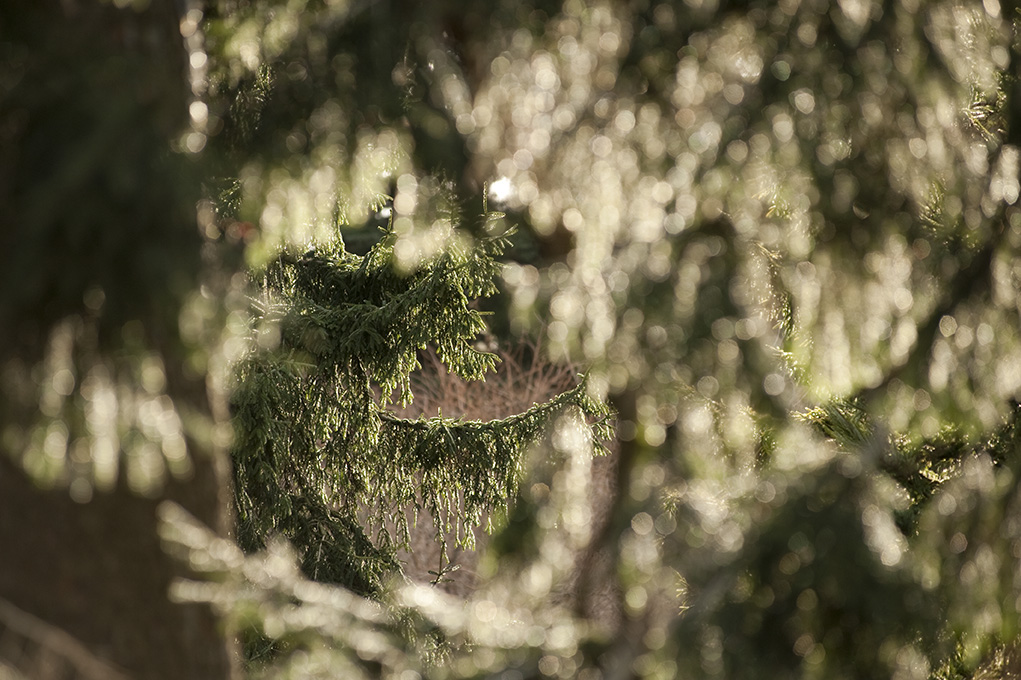
O Christmas tree! (photo by Ivo M. Vermeulen)
Posted in Photography on December 15 2010, by Plant Talk
Not Christmas lights. Sunlight.
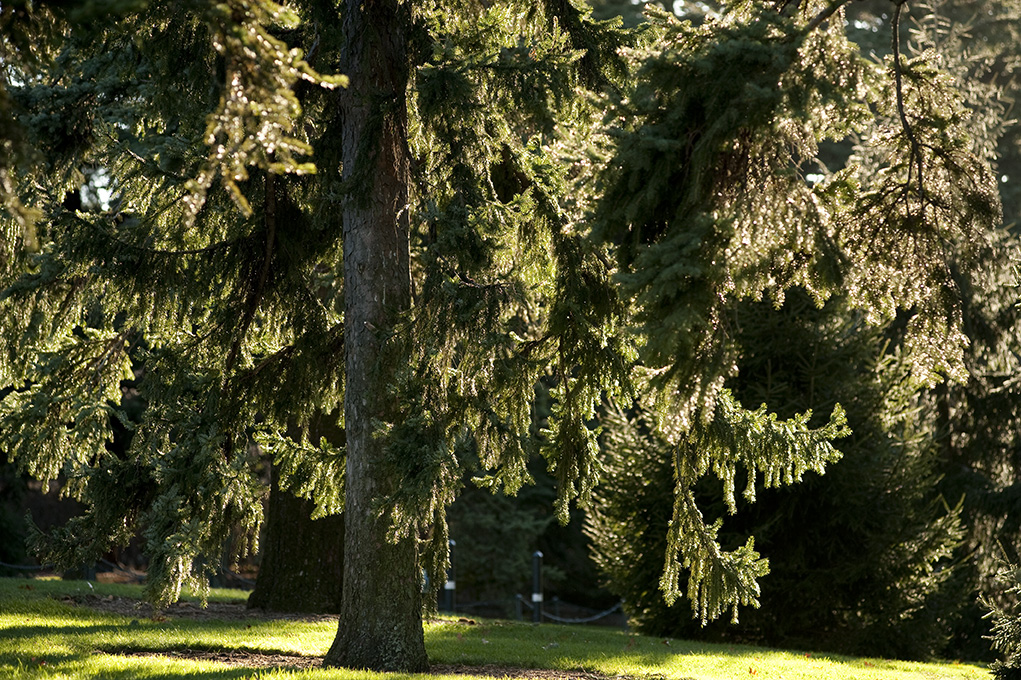
In the Ross Conifer Arboretum (Photo by Ivo M. Vermeulen)







